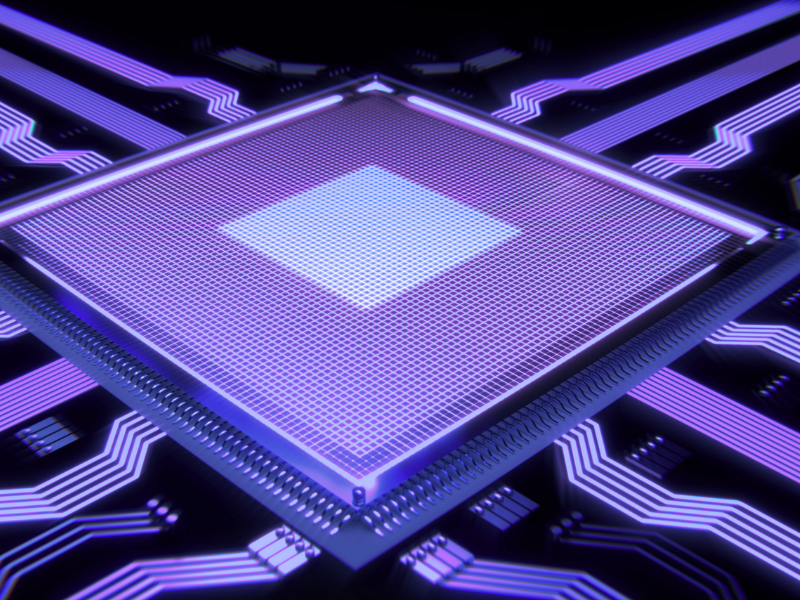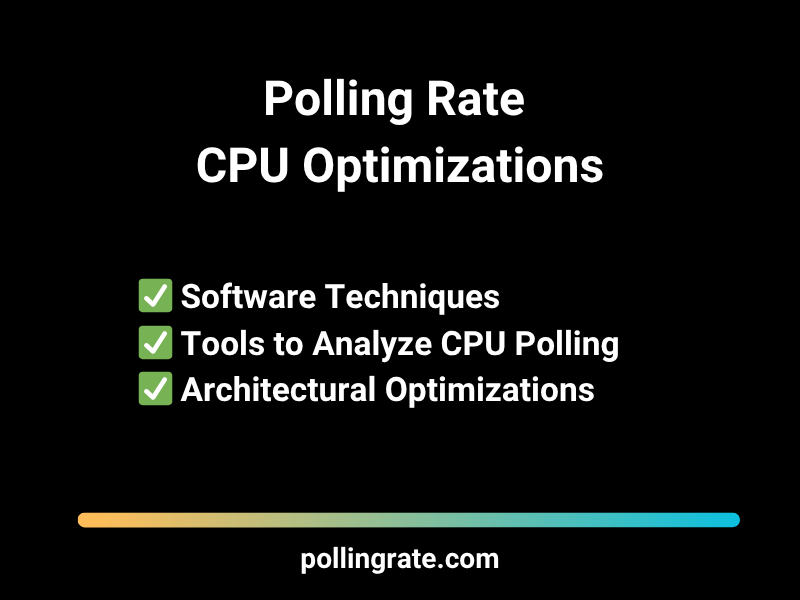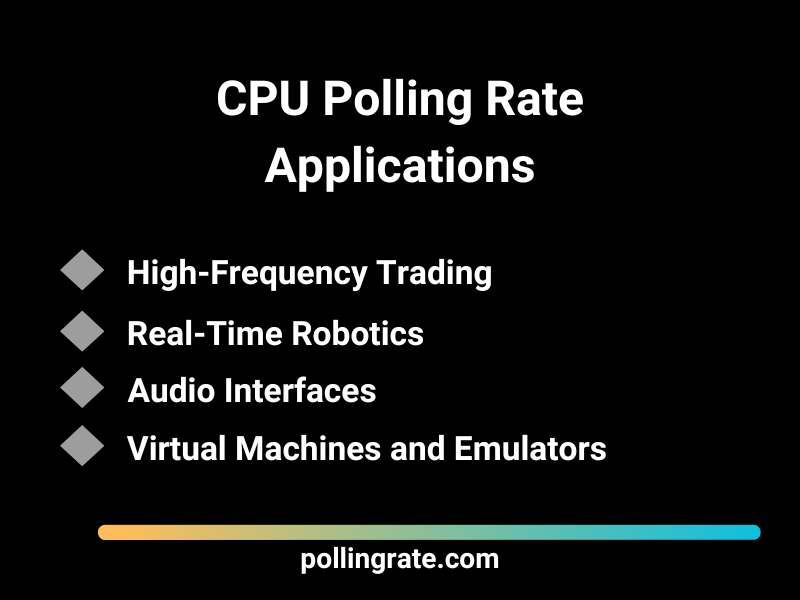Polling Rate on CPU: How Processor Polling Impacts System Performance 2025
Polling rate on CPU refers to how often the central processing unit checks or “polls” for data, events, or status updates from connected devices, memory, or internal system components. This action is distinct from peripheral polling (like with a mouse or keyboard), as CPU polling is not typically defined in static Hertz (Hz) terms but is instead influenced by software loops, interrupt handling, operating system scheduling, and workload type.
Simply put, CPU polling is the process of repeatedly querying devices or software conditions to check whether something has changed or occurred. It’s a core behavior in many types of computing environments—including real-time systems, gaming engines, high-frequency trading systems, and embedded microcontrollers.
Understanding how CPU polling operates, and when it’s beneficial or detrimental, can significantly influence performance, latency, power efficiency, and thermal load in both consumer and enterprise systems.
Tip: Ready to crush the competition? Check out our top pick for hardcore gamers on Amazon* (Affiliate Link)!

Why Polling Rate on CPU Matters
Polling rate on CPU matters because it directly impacts:
System Responsiveness: A fast polling loop can detect events quickly, which is essential for latency-sensitive applications.
Power Efficiency: Constant polling can increase power consumption, especially in laptops, mobile, or embedded systems.
Thermal Output: High-frequency polling tasks generate continuous CPU usage, often resulting in more heat.
CPU Time Allocation: Intensive polling can monopolize CPU cycles, reducing bandwidth available for other threads and processes.
Depending on your use case, polling can either be a powerful tool for control and timing or a costly mistake in system design. Consider:
In competitive gaming, polling influences the rate at which inputs are processed and displayed.
In embedded robotics, polling ensures hardware safety and correct sensor readings.
In financial trading systems, nanosecond differences in polling performance can affect profitability.

CPU Polling vs Interrupts: The Foundational Difference
Modern computing platforms use hybrid models—low-power devices favor interrupts, while high-speed loops (like GPU rendering, real-time simulations, or network packet sniffing) use polling for deterministic timing. The polling rate on CPU in these high-speed loops is carefully balanced to optimize performance without overwhelming system resources.
For ultra-low latency, developers sometimes intentionally choose polling, even though it consumes more CPU, to eliminate the unpredictability of interrupt timing.
| Method | Description | Pros | Cons |
|---|---|---|---|
| Polling | Continuous CPU checking of device/memory state | Consistent timing, low complexity | CPU waste when idle, power drain |
| Interrupts | Device sends alert to CPU only when needed | Efficient, event-driven | Can introduce latency, more complex |
Polling
Description: Continuous CPU checking of device/memory state
Pros: Consistent timing, low complexity
Cons: CPU waste when idle, power drainInterrupts
Description: Device sends alert to CPU only when needed
Pros: Efficient, event-driven
Cons: Can introduce latency, more complexPolling Rate on CPU: How Polling Impacts System Performance Across Key Areas
Understanding how polling rate on CPU affects your system is crucial for both developers and performance-focused users. Polling loops run across many layers of computing—from gaming engines to embedded systems—and can have a significant impact on CPU utilization, latency, and energy efficiency.
🎮 Game Engines
Modern game engines like Unity, Unreal Engine, and Godot rely heavily on high-frequency polling loops within their main game loop to ensure real-time responsiveness.
Typical checks per frame include:
Keyboard, mouse, and controller input
Frame buffer status and GPU sync
Physics simulations and collision detection
Here, the polling rate on CPU must be optimized to balance smooth gameplay and system load, especially at high frame rates (144 Hz+).
💻 OS Kernel and Device Drivers
At the operating system level, polling threads are used in kernel modules and drivers to monitor:
Disk I/O activity and buffer queues
Incoming network packets
Real-time system clocks and timers
Tools like top, iotop, and powertop in Linux can help monitor how polling affects CPU cycles and power usage. High polling rates here can increase CPU overhead—especially under heavy multitasking.
🔧 Embedded Systems and Microcontrollers
Devices like Arduino, ESP32, and Raspberry Pi rely on tight polling loops in microcontroller code to perform tasks such as:
Monitoring sensor input in real time
Debouncing physical button presses
Driving motors or controlling LEDs
In these systems, the polling rate on CPU must be kept efficient to preserve battery life and meet real-time performance constraints. Developers often run loops thousands of times per second—fine-tuning each instruction to prevent bottlenecks.
🔍 Hands-on Tip: Explore polling behavior with a Raspberry Pi 4 Kit or Uno Starter Kit on Amazon* (Affiliate Link).
🎥 Media & Streaming Applications
In multimedia systems, polling mechanisms help maintain synchronization and playback quality by checking:
Audio buffer availability
Video decoding readiness
Frame sync for AV outputs
A poorly managed polling rate on CPU can lead to stutter, desync, or CPU spikes—especially when streaming or multitasking.
How to Monitor and Optimize Polling Rate on CPU
Though not directly “settable,” polling behavior and the polling rate on CPU can be observed and optimized with the right techniques.
✅ Software Techniques:
Use
sleep()orwait()functions to yield CPU timeImplement non-blocking I/O instead of busy waits
Use select(), poll(), or epoll() (Linux) to await I/O readiness
✅ Tools to Analyze CPU Polling:
Linux:
perf,powertop,strace,iotopWindows: LatencyMon, Windows Performance Analyzer (WPA), Intel VTune (check Intel CPUs on Amazon* (Affiliate Link))
Cross-platform: Sysinternals Suite, Visual Studio Profiler, Task Manager
✅ Architectural Optimizations:
Prefer interrupt-driven systems for energy saving
Replace polling with timers for scheduled checks
Use multi-threading or asynchronous design to separate polling from core logic

Efficient Polling: How to Reduce CPU Load with Smarter Code
In low-level systems programming, the way you implement a polling loop can have a major impact on CPU usage and overall system performance. Especially when optimizing the polling rate on CPU, understanding how to avoid naïve patterns is key.
🚫 The Naive Polling Loop
Many beginner implementations of device polling look like this:
while (true) {
if (device_ready()) {
read_data();
}
}
While functionally correct, this code is extremely inefficient. It causes the CPU to run at 100% usage, checking the device status millions of times per second—even when no data is available. This “busy waiting” behavior wastes CPU cycles, increases power consumption, and heats up the system unnecessarily.
✅ A More CPU-Friendly Polling Loop
To reduce system strain, introduce a minimal sleep delay between each loop iteration:
while (true) {
if (device_ready()) {
read_data();
}
sleep(1); // Wait 1 millisecond (or appropriate delay)
}
This version drastically lowers the polling rate on CPU, allowing other threads to run and reducing CPU stress, while still maintaining responsiveness.
You can also use platform-specific sleep functions:
std::this_thread::sleep_for()in C++Thread.sleep()in Javatime.sleep()in Python
CPU Polling Rate vs Peripheral Polling Rate
| Feature | Peripheral Devices | CPU Polling |
|---|---|---|
| Frequency Range | 125–8000 Hz | Up to millions of checks/sec |
| Adjustability | User-defined via drivers | Defined by code/OS scheduling |
| Visibility | Easily benchmarked | Requires profiling tools |
| Impact | Input lag or responsiveness | CPU utilization, thermal load |
| Control Level | User configurable | Developer/programmer defined |
Frequency Range
Peripheral Devices: 125–8000 Hz
CPU Polling: Up to millions of checks/secAdjustability
Peripheral Devices: User-defined via drivers
CPU Polling: Defined by code/OS schedulingVisibility
Peripheral Devices: Easily benchmarked
CPU Polling: Requires profiling toolsImpact
Peripheral Devices: Input lag or responsiveness
CPU Polling: CPU utilization, thermal loadControl Level
Peripheral Devices: User configurable
CPU Polling: Developer/programmer definedApplications That Depend on High-Efficiency CPU Polling
High-Frequency Trading (HFT): Millisecond polling advantages matter in financial systems
Real-Time Robotics: Safety-critical systems must constantly poll sensors and actuators
Audio Interfaces (DAWs): Low-latency polling for real-time playback and recording
Scientific Computing: Parallel CPU loops often include polling for result aggregation
Virtual Machines and Emulators: Virtual Machines and Emulators: Simulate real hardware behavior through polling cycles, where the polling rate on CPU plays a crucial role in accuracy and responsiveness
Books on real-time architecture can provide deeper insight—see Real-Time Systems Book on Amazon* (Affiliate Link).

Best Practices to Optimize Polling Rate on CPU and Prevent Resource Waste
When designing software that relies on frequent device status checks or real-time input monitoring, optimizing the polling rate on CPU is essential for performance, efficiency, and system health.
Below are key strategies developers should follow to reduce unnecessary CPU load while maintaining responsiveness:
🔁 Replace while(true) with Scheduled Timers or select()-Based Loops
Instead of using infinite loops with constant checking:
while (true) {
check_status();
}
Use OS-native timers or I/O multiplexing tools like select(), poll(), or epoll() (Linux) and WaitForMultipleObjects() (Windows):
fd_set inputs;
select(max_fd + 1, &inputs, NULL, NULL, &timeout);
This approach allows your application to sleep efficiently until input is available—greatly reducing the polling rate on the CPU and improving multitasking.
🧵 Use Thread Priorities Wisely
Assign appropriate thread priorities using your platform’s scheduling system:
Avoid giving polling threads real-time priority unless absolutely necessary.
Use
nice(Linux/Unix) to set user-space priority levels.Use
ioniceto manage disk I/O-bound polling threads separately.
This prevents CPU starvation where polling monopolizes system time at the expense of other critical processes.
🖼️ Avoid Polling in GUI Threads
GUI frameworks (like Qt, WinForms, WPF, or GTK) are sensitive to thread blocking. Polling inside a UI thread can lead to:
Unresponsive windows
Delayed button clicks or redraws
Poor user experience
Instead, use event-driven programming and async signals/slots, async/await, or dispatch queues (macOS/iOS) to decouple polling logic from the GUI.
📊 Monitor System Impact in Real Time
Use modern system tools to understand how polling loops affect your CPU:
Linux:
htop,iotop,powertopWindows: Windows Performance Analyzer (WPA), Task Manager, PowerShell’s
Get-ProcessCross-platform: Use telemetry to log polling intervals and CPU utilization per thread
Monitoring tools help you catch excessive CPU usage caused by inefficient polling logic and tweak accordingly.
🛠️ Control Process Behavior with nice and ionice (Linux)
Use the nice command to lower the CPU priority of non-critical polling tasks:
nice -n 10 ./my_polling_app
For disk-related polling, ionice adjusts I/O priority:
ionice -c2 -n7 ./my_disk_monitor
These utilities help ensure that polling processes don’t degrade the performance of your overall system—especially in multi-user or server environments.
Final Thoughts: Should You Optimize Polling Rate on CPU?
While most gamers think of polling rate in terms of mice, keyboards, or controllers, polling behavior at the CPU level plays a critical role in how efficiently your system handles real-time input and output. For developers, system architects, and engineers, optimizing CPU polling isn’t optional—it’s essential for building fast, responsive, and stable systems.
In gaming and high-performance computing, inefficient polling loops can lead to frame drops, latency spikes, thermal throttling, or unnecessary power drain. If your software constantly checks for new data without smart scheduling or throttling, you’re not just wasting CPU cycles—you’re risking real performance loss in the moments where milliseconds matter most. Whether it’s handling gamepad input in a tight loop or processing high-speed sensor data, how your CPU polls can define the quality of the experience.
End users won’t tweak CPU polling directly, but the ripple effect of bad polling design is felt everywhere—from laggy gameplay to overheated laptops. That’s why it’s crucial for developers to build polling logic that’s non-blocking, power-aware, and designed for low-latency performance across threads and cores.
At pollingrate.com, we explore not just what polling rate means on the surface, but how deeper system-level behavior impacts gaming, creative workloads, and real-time performance.
Want to build faster, smarter, and more efficient systems from the ground up? Check out our full Polling Rate Guide and learn how CPU-level optimization can transform performance across the board.
